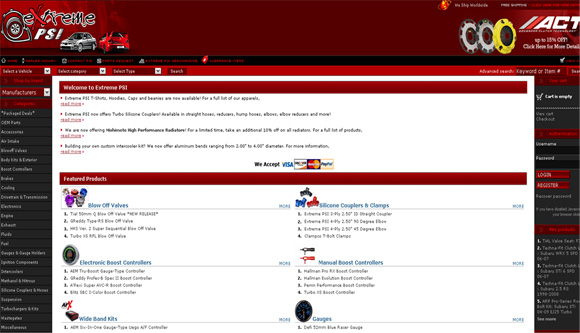In Part 1 of our series on bounce rates, we explored how to drill down into your metrics to find the numbers that really matter. But that left us with an unsettling question. For the users that do bounce but shouldn’t…what is missing that would pull them into your site?
Look at where your traffic is coming from and where it is landing
Many people think that a high bounce rate means there is a problem strictly with the content on the page. While that can be the case in part, you should take a step back and look at where people are coming from and the messages they see before arriving to your site to fully diagnosis a high bounce rate. For example, let’s look at the following user interaction…I’ll be the guinea pig.
I’m thinking of buying a new turbocharger for the Subaru WRX I race on the weekends. So I search for turbochargers.
Then I click on a PPC ad that mentions the following items:
- Unbeatable prices
- Turbochargers in stock
- Free shipping
I think to myself, “Great! This is exactly that I am looking for.” I initiate a click and this is the page I am greeted with:
Where is free shipping?
Where are the in-stock items?
And most importantly… WHERE ARE THE TURBOCHARGERS?!
If you just looked at the content of the site in a vacuum, you would find it acceptable. But users being directed to this site from that PPC ad have expectations that this page isn’t fulfilling.
I have seen many people in this situation look at their site metrics and when they see the high-bounce rate, just keep radically changing the page without any real regard to the user’s thought sequence. They get frustrated when the page continues to underperform.
And remember, I am just using my quest to break the local time trial record in my tuned-up WRX as an example. These principles do not only apply to landing pages or companies running paid traffic.
Text links (on other sites directing traffic to your pages), emails, and newsletters set just as much expectation as paid search banners. For external links, use a research tool like Yahoo Site Explorer to investigate the links to your pages along with the messages being communicated. Then evaluate if your page connects with those messages (If you’re uncomfortable with how your page is presented, contact the owner of the page to edit the links. You will be surprised how willing people are to make those edits if you ask nicely.)
Of course, giving customers the information they need is only the beginning. If we really want to address the bounce rates of key segments we are concerned about, we must get them to act…
On Wednesday, Part 3 will examine how you get visitors to act by giving them a clear path for what to do next.
Have additional questions? Other metrics you’d like to look at? Use the comments section below or shoot me a tweet me at: @ctrentmarketing






You have hit the nail on the head. This comes under bait and switch, even if not done intentionally.
When a user has some expectations when she lands on your page, you have to continue her experience or she is going to be very unhappy and will vote with her click (on the Back button).
Arun
Arun, Glad you found the article of benefit.
In addition, you are right that users will vote on your content with the back button, especially for the PPC example here. Users are arriving from a search result page with other options (other competitors PPC ads and organic listings). Visitors are armed with the information that they can just hit the back button and try someone else. With knowing this, it can mean these visitors will tolerate even less with elements on your page, and how disconnected it is from the information they are looking for.
Remember, to visit another competitor on the web is not piling all the kids in the minivan and going to a store down the road. It is (as you put), a simple click of the mouse.
Interesting thing, I spent a lot of time trying to optimize the AdWords ad and the sales pitch on one of the landing pages in one my comapny’s campaigns.
After a few months I figured that these visitors I was targeting ar enot interested in any type of sales pitch, what they actually wanted to see was portfolio page. So once I changed the landing page to portfolio page, bounces almost disappeared completely 🙂
Toni,
Thank you for the real world example.
Delivering relevant messaging is going to be the key in engaging your users. I will add a word of caution that with sales driven pages you will have some bounce and drop out. Due to the fact, you are trying to qualifying people for some reason (e.g. product, message, or lead) some will not fit that profile. While your goal should be to get the most qualified people to the page sometimes people sneak in. The word of caution is, in an effort to get bounce rate down do not water down your message to the point where this is no sales pitch. We can easily make a page that is softer in pitch, but what does that do to conversions? Friction is going to be inherently part of the system so when addressing bounce rate, make sure that while certain pages you test may have a positive effect on bounce, you are not suffering on the sales side.
Glad you were able to find that appropriate message for your audience and again thanks for sharing.